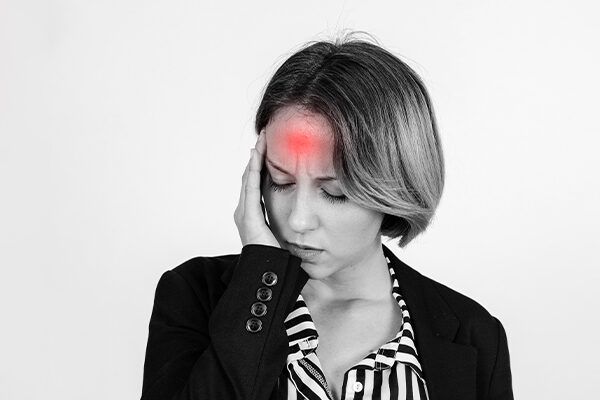Last Updated on January 5, 2023
A burning sensation, quick trips to the restroom, or simply a little dribble?
Introduction:
Bladder control problems cause the bladder to leak urine without your awareness. These issues are four times more common in women than in men. Moreover, two-thirds of women who have female bladder problems do not seek help because they regard it as a normal female problem and believe nothing can be done about it. Don’t let embarrassment keep you from seeking help if you have bladder control issues. Leaking urine, having to urinate frequently, and experiencing other symptoms of urinary incontinence are not minor side effects to the female urinary system or a normal part of aging.
Female Urinary System
The female urinary system is the same as a male’s urinary system. The urinary system functions as a filter, removing toxins and wastes from the body via urine. This involves the kidneys, ureters, bladder, and urethra. These are the organs that produce, store, and excrete urine. When the urinary system is functioning correctly, the kidneys produce urine and transport it to the bladder.
The bladder is a balloon-shaped organ that serves as a urine storage unit. It is held in place by pelvic muscles in the lower abdomen. Urine passes through a network of tubes and ducts. These tubes are linked to your blood vessels as well as your digestive system.
Normal urination occurs when all parts of the urinary system are in perfect working order, and the body can expel wastes efficiently. However, if you have female bladder problems that impair this system’s efficiency, this can affect several critical functions, including:
- Waste/excess fluid expulsion from the body
- Maintaining proper electrolyte levels
- Hormone secretion, for example, blood pressure regulation
Types of Female Bladder Problems
Women of all ages suffer from bladder problems, which vary in terms of cause and contributing factors. Some are caused by a weakness of the pelvic fascia-muscular supports, while others are caused by nerve damage.
The following are the most common types of female bladder problems or female urinary system issues encountered.
Kidney Stones:
Kidney stones form when small particles attach to crystals in the urine and grow in size until they can significantly impair urinary function. These stones can also pass from the kidneys to the ureter. One of the most common causes of urine blockage is kidney/ureter stones. One of the most obvious urine blockage symptoms caused by kidney stones is acute pain when passing urine.
Urinary Incontinence:
It is defined as a loss of bladder control that results in urine leakage. This is a very common problem that can have a negative impact on your lifestyle and daily routine. It can be caused by a variety of factors, including weak bladder muscles, overactive bladder, weak sphincter muscles, infections, and diseases such as Parkinson’s, among others. Some urinary incontinence causes can be treated with lifestyle changes, while others may necessitate surgery.
Urinary Tract Infections (UTIs):
These are caused by a bacterial or viral infection of the urinary tract. A burning sensation when urinating is one of the most obvious symptoms of UTI. You may also notice that you are unable to completely empty your bladder even after passing urine, and you may have frequent urges to urinate throughout the day.
When it comes to diseases that can affect the female urinary system, the last two are by far the most common in women.
Symptoms of Female Bladder Problems
Female bladder problems can be hidden, which means you may not always notice any symptoms. However, if they do appear, this will indicate that your problem is either a urine block caused by a UTI or urinary incontinence. The symptoms commonly include:
- The urge to urinate frequently
- The sensation that your bladder is always full, even after you’ve urinated
- Pain or a burning sensation while urinating
- Inability to pass normal amounts of urine
- Urine that is discolored or has blood in it
- Urine that has a strong odor
- Urine is expelled involuntarily when you laugh or sneeze
- Uncontrollable, involuntary urine passage, whether minor leaks or a full flow
- Dribbling urine throughout the day and night
Because similar female urinary system symptoms can arise from a variety of other ailments, this condition may be overlooked or misdiagnosed. Approaching an experienced physician for an accurate diagnosis is critical in this situation.
The symptoms of female urinary system problems can be classified based on which part of the system is affected. When the lower tract, urethra, and bladder are affected, the disease is easier and faster to treat.
Causes of Female Bladder Problems
The following factors contribute to bladder control issues:
- Pregnancy and childbirth
- Constipation
- Medications include prescribed medicines, over-the-counter medicines, and herbal supplements
- Chronic cough
- Urinary infection
- Diseases that influence your nervous system and muscular control
- Diabetes
- Obesity
- Reduced production of hormones after menopause (when your period stops) — this could lead to other issues in perimenopausal women
Diagnosis of Female Bladder Problems
If your doctor suspects any problem, the diagnosis begins with the collection of a urine sample following a preliminary examination of the female urinary system.
In the case of urinary incontinence, the urine sample will be examined for blood traces, abnormalities, and infection. The doctor will also ask you to keep a detailed record of your fluid intake, the amount of urine you produce when you urinate, incontinence episodes, and urges to urinate.
The next step is to determine the amount of post-voided urine in your bladder. That is, after you urinate, the amount of urine remaining in your bladder is measured to determine whether there is a urine blockage causing the problem and, if so, what the cause is. A muscular weakness or a nervous problem could also cause a large amount of urine to remain in the bladder after urinating.
Next Step – Female Urinary System:
After these tests, the doctor will be able to tell you more about what is wrong with your female urinary system and what is causing the problems.
If the doctor suspects a urinary tract infection (UTI), he or she will repeat the urine analysis after a check-up. The sample will be examined for the presence of bacteria as well as red and white blood cells. The doctor may then perform a urine culture to determine what type of bacteria you are infected with. This enables him/her to determine the best course of treatment for you.
If your doctor suspects that your UTI is caused by something other than a bacterial infection, he or she may recommend a thorough examination of the tract. There are several methods for doing this, and the doctor may recommend one or all of them: CT scan, ultrasound, or MRI. A cystoscopy is another method that the doctor may employ to examine the urethra and bladder.
Treatment for Female Bladder Problems
If you’re experiencing any such symptoms as pain or burning while urinating, leaking urine, a sudden or frequent urge to urinate more than usual, or bloody/cloudy urine, make an appointment with your doctor to discuss your symptoms and determine treatment.
The treatment goals are to control your symptoms and protect your kidneys and female urinary system. The treatments are designed to improve your quality of life. And this can happen significantly when female bladder problems are closely monitored and treated.
Fortunately, simple lifestyle changes can relieve many of the common bladder symptoms. If lifestyle changes aren’t working for you, nonsurgical treatments are the preferred method for resolving bladder control and female urinary system issues. Among these treatments are:
- Devices that reposition your urethra in order to reduce leakage
- Bladder training (going to the bathroom at set times)
- Biofeedback can assist you in learning to control your muscles
- Limiting your intake of alcohol and caffeine
- Electrical stimulation of nerves that control bladder function
- Kegel workouts (pelvic floor exercises)
- Exercise and physical therapy
- Weight reduction
If nonsurgical treatments fail to resolve your bladder control problem, your doctor may recommend surgery. Bladder control surgery may include the following procedures:
- Mesh used in surgery
- Sling techniques
- Injections that make your urethral lining bigger (urethral bulking agents)
- Injections of botulism toxin (Botox®) into the bladder muscle
- Nerve stimulation equipment
- A synthetic urinary sphincter
Summary
The urinary system is important for survival. It filters the blood and removes waste and excess water in the form of urine. A lot of women don’t look after their urinary health. Conditions like urinary tract infections, sexually transmitted infections, kidney disease, urinary incontinence, and urinary tract obstruction can all have an impact on the female urinary system and could cause bigger female bladder problems.
Don’t let embarrassment keep you from getting help. Talk to your doctor about what steps you can take to protect your health.




